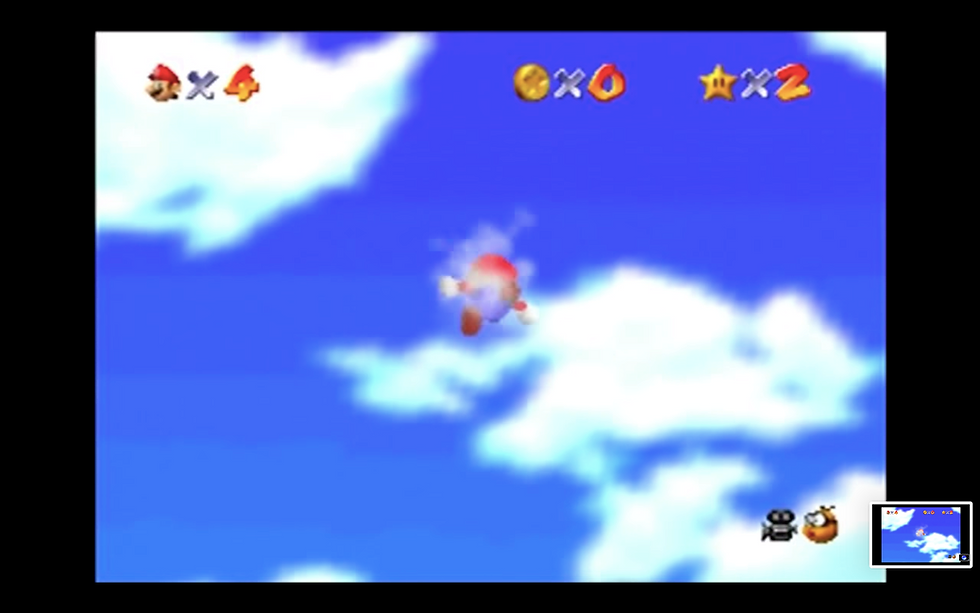Game Review: Frogger
- Neil Makhija

- Oct 15, 2019
- 3 min read
For a retro game, I chose to play Frogger, which originally came out on the Atari 2600 in 1981. You play as a frog, trying to cross a highway and then a river by dodging cars and jumping on bugs, logs, and other platforms. The goal is to land 5 frogs on the lily pads on the other side of the river in order to proceed to the next level, each with an increasing amount of difficulty. Although the controls were a simple use of the arrow keys, the game mechanics allow the player to move as quickly or slowly as they want, while keeping track of time spent getting to the other side.
Playing this game, it felt like patience was rewarded more often than fast play. If you waited for enough time, you could very often pass by half the level in a few quick seconds. If you jumped right in without looking ahead, it would very often result in an untimely death. Since each play only got three lives, playing the game was incredibly frustrating if you didn’t pace yourself, as you would keep dying. Action was more often rewarded than inaction – for example if the player sat on a log and didn’t move, death would occur as soon as the log went off screen. In this game, the player is confined to the screen and penalized for going out of bounds. This is the opposite of Problem Attic, where the map was bigger than the screen, and the player would simply pop back up on the other side of the map if travelling off one side.
This well-defined structure can be seen to speak to the economic and social conditions of the 80s when the game was released. The early 80s were characterized by recession with a high unemployment rate of 7.2%. With this economic downturn, more and more people were looking to escape the confines of their lives by engaging in videogames. The irony is that when playing Frogger, the player is trading the limits of their own daily lives with those of the game, trapped on one screen and unable to continue unless accomplishing the exceedingly difficult objective.
While this is only one reading of Frogger as a commentary on the economic conditions of the 80s, as there are other parallels that can be drawn between real life and the game which allow the player to engage with a deeper analysis of the game. The linearity of movement with game mechanics (up, down, left, and right) can be seen to mirror that of social mobility – with movement only allowed in certain directions and an inability to move in complex ways (diagonally in the game, for example). There is also no way to skip, or teleport over certain lanes in the game, just as there are no shortcuts in life.
Despite these similarities, there are some game elements of Frogger which go against real life. One big difference is three lives in the game compared to the one life we each get as humans. One of the more important differences however is information – the player can see the entire level, including each lane of traffic/logs on the river. With this complete set of information, the player can make fully informed decisions, with the knowledge that will allow them the successfully pass through the level or die trying. This isn’t the case in real life, where a person does not have complete knowledge or how the environment will respond to each of their actions.
As individuals, we each have a limited line of sight and point of view, which often prevents us from seeing the bigger picture when facing obstacles. This perspective is especially relevant in the river portion of the game, when you can jump on bugs, crocodiles, or logs. You can incur penalties for jumping into the mouth of the crocodile (justifiably) or even by jumping on bugs, as some of them disappear under water. Because of this, vision is incredibly important, since you have to be able to see where the bugs will be before you can jump on them. This also is the case within the brief second on the bug where it is surfaced, as you can still fall into the water if the bug disappears before you jump onto the next platform. While this mechanic adds an element of tension to the game by increasing the player’s heart rate and making them consciously think about their next move, it also adds a dynamic aspect of gameplay which stays fresh even after playing a few levels. Frogger continues to be a timeless classic, as even now, years after its release, it still has a competitive element that pulls me back into the game every time I lose my three (very short) lives.




Comments